Puppy Training – How To Make and Use a Puppy Play Den!
Today we’ll expand on an idea we’ve mentioned several times: the Puppy Play Den. We’ll show you how to build it, why we do it, and how to put it to good use.
WHY A DEN?
A Puppy Play Den solves a big conundrum when raising a puppy. For starters, we know puppies should not have free range of the house, especially while you’re gone. We need to prevent potty and chewing mistakes. Many puppy experts recommend toy-feeding your puppy in their confinement space to habituate them to it, teach them to enjoy being alone and help them become chew toy trained. This greatly reduces the likelihood of a dog chewing on inappropriate items or developing distress or anxiety later. But we also know that a puppy usually needs to go potty soon after they eat.
Plus, most of us working stiffs will have to leave the puppy for a few hours at some point. So how do we reconcile long-term confinement, toy-feeding, and potty training? All of these loose ends are resolved with a Puppy Play Den. The puppy Play Den was first suggested by the world-famous trainer, behaviorist, and vet, Dr. Ian Dunbar, in his landmark book, “Before and After You Get Your Puppy.” Open Paw later picked up the plan, which created the textbook for planning and caring for shelter animals. The Purpose of a Long-term Confinement area, as far as puppies are concerned, is two-fold:
- Prevention. Errors increase the likelihood of more errors, so we confine the puppy to an area that precludes chewing and potty mistakes around the house when we cannot supervise them.
- Proaction. We want to maximize the likelihood that the puppy will learn to use the provided toilet, chew only chew toys, and settle down calmly without barking.
Prevention and proaction are your best friends. Most behavior problems are predictable and, therefore, preventable. Don’t wait for your puppy to make mistakes. You’ll be running after the puppy, doing damage control, and playing catch-up. It’s much better to set the stage and short-circuit problems before they appear preemptively.
THE BUILD
The basic components of the Play Den are:
- A Waterproof floor
- A crate or a comfortable bed
- Hollow, stuffed chew toys
- Water
- And a doggy Toilet, not pads, in the farthest corner from the bed (we’ll go into detail with the toilet in a second)
- An Optional add-on is an X-Pen that you can use to surround the individual pieces if the room is too large or cannot be safely puppy-proofed.
Let’s drill down on the individual components.
STEP 1: LOCATION
Figure out where you will set up your puppy’s Play Den. Ideally, this could be a kitchen, bathroom, utility room, or section of a room sectioned off by an exercise pen. Ideally, you want this close to the outside door so you can get them outside quickly when it’s time to take them out of their Play Den. It’s good to establish going outside to potty as part of the routine any time the puppy spends time with you.
2: BEDDING
Give your puppy a crate or a bed. Plastic Crates are the preferred tool here. You can take the door off. You can even take the top off for an easy-to-clean bed with high sides. A typical dog bed may encourage chewing on the wrong thing. In a pinch, a towel can take the place of more easily chewable bedding.
3: STUFFED CHEW TOYS
We’ve recommended before, as do many puppy experts out there, that toy-feeding your puppy in their confinement space is hugely beneficial for teaching them to enjoy being alone and to help them become chew toy trained. This greatly reduces the likelihood that a dog will chew on inappropriate items or develop distress or anxiety about being alone later on. Toy feeding and work-to-eat toys are the fastest and best methods. These include Kongs, Buster Cubes, Squirrel Dudes, Barnacles, and Atomic Balls. Confinement prompts your puppy to focus on their stuffed chew toys, leaving little time to worry or bark.
We’ve discussed how to deploy these toys in our Kong video, but remember, any brand or configuration will work mostly the same. No matter what, though, these must be the only sources of food or chewable available. Do not use a food bowl.
Our post on the 4 types of dog toys and how to use them effectively goes into more detail about selecting your toys.
4: A BOWL OF FRESH WATER
Pretty self-explanatory.
5: YOUR DOGGY TOILET
Listen: ditch the puppy pads. Puppy pads do very little to help potty train your puppy. They prolong the process and potentially create bad habits. Instead, we recommend a homemade toilet. Understand that puppies form three soiling preferences: olfactory, substrate, and spatial.
- If they smell poop or pee, even someone else’s, it’s a toilet to them. Smell triggers potty behavior.
- Dogs form a preference for the surface they like to go on. For a puppy, this is your opportunity to teach them what you want them to go on. If you ignore this, they’ll form a preference that may not be what you wanted, such as your hardwood floors or area rugs.
- They also will come to prefer going to certain places according to landmarks. This component won’t be in place until you take them outside, but getting the Olfactory and Substrate dialed in will absolutely streamline the outdoor process.
This is why I hate puppy pads. Based on these three preferences, pads teach your puppy to prefer pads that will hinder your work later on. And if you remove the pads, they’ll find something else in the house to go on that feels similar to them, like bathmats, rugs, or even in the spot where the pads used to be according to a spatial preference they formed if the pads were used too long.
On a side note, though, pads might be a good solution for people that cannot or do not want to outdoor train their dogs. Disabled dog owners or people living in high-rise apartments might want to pad train their dogs. Just be aware of the ramifications and go into it intelligently.
Building the indoor toilet
Making the toilet is a snap. NOTE: we’ve updated the build recommendations for the indoor toilet since we made the video above. What follows is the current recommendation.
- Get a cat litter pan, baking pan, or plastic gardening tray. A big pan is recommended. You want a BIG potty area.
-
Don’t use the standard clay-based litter; wood shavings are best. They smell good, and they desiccate the poop for easier cleanup. It also prevents tracking of messes. Second best is recycled/pressed newspaper pellets. The pellets for cats (or even horses, the cheapest option) are exactly the same stuff, so don’t feel like you have to get something with a picture of a dog on the package.
-
Make the substrate deep; it’s a little bit of a cue to the dog to use it. If they’re sleeping in the potty substrate, you have a problem with the crate or pen layout.
This type of toilet works super. You’ll take the puppy outside whenever your puppy is with you. But on those occasions when they need to spend time in confinement, the toilet will keep the potty training on track and aligned with your household needs.
Many small-breed and puppy owners are moving towards litter box training. It’s not as portable or clean as a pad, but it is more cost-effective and convenient in the long term. A lot of those little guys struggle with inclement weather. Predators are also a greater concern in some cases, including coyotes and birds of prey. Both have been known to make off with little dogs.
Simpawtico’s “Potty Training Decoded” eBook outlines your entire potty training regimen. The book goes into way more detail!
PLAY DEN DWELLING
Try to have short play and training sessions hourly. If and when you cannot pay full attention to your puppy, it is time to put your puppy in their Play Den with proper chew toys and a self-training toilet. This is just like putting a baby in a playpen or crib when you can’t supervise them! Remember that any potty or chewing mistakes your puppy makes are potential setbacks that anticipate more to come.
If an inexperienced puppy is allowed unsupervised free run of your home, potty, and chewing mistakes are guaranteed. And your puppy could become hyperactive and anxious. As we said, problems are predictable and preventable, so steer that ship where you want it now instead of just being at the whim of fate. Of course, once your puppy has mastered their household manners and enjoys time spent alone, they can enjoy a full run of your house and yard any time they want.
All right, puppy owners, good luck constructing and using your puppy Play Den. If you have some creative builds or alternate solutions, we’d love to hear about them in the comments.
As always, keep learning, keep practicing, and we’ll see you next time!
ONLINE RESOURCES
See Dr. Dunbar himself talk about the playpen Article on DogStar Daily Article on Open Paw
WORK-TO-EAT TOYS for TRAINING
The links below are affiliate links. These won’t cost you anything, but the commissions we may earn through them help offset the cost of dog treats. Thanks for your support!
- Standard Kong
- PetSafe Barnacle
- PetSafe Squirrel Dude
- OurPets Atomic Ball
- Westpaw Quizl
- OurPets Buster Cube


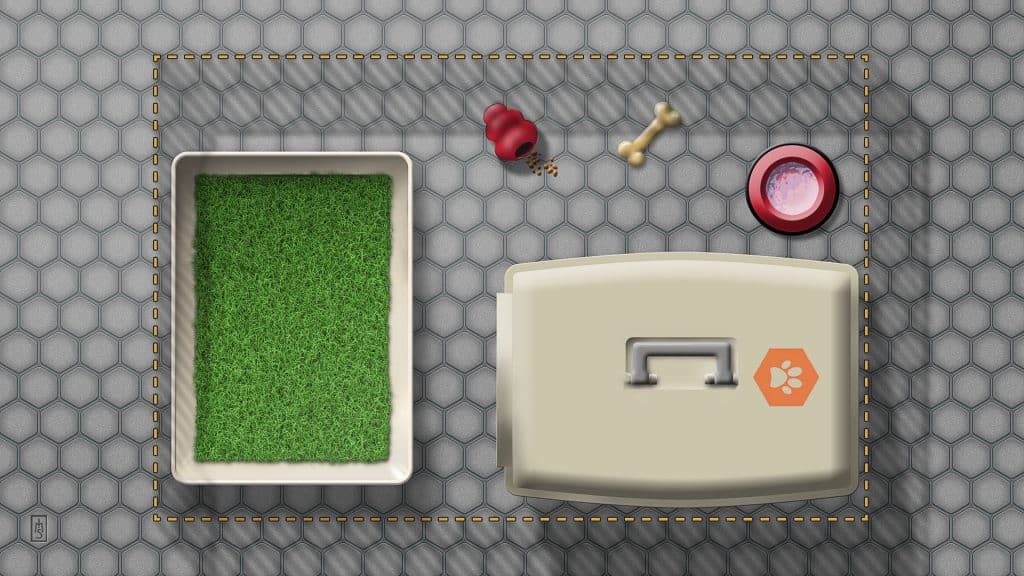
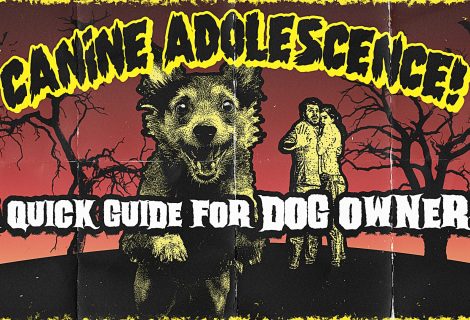
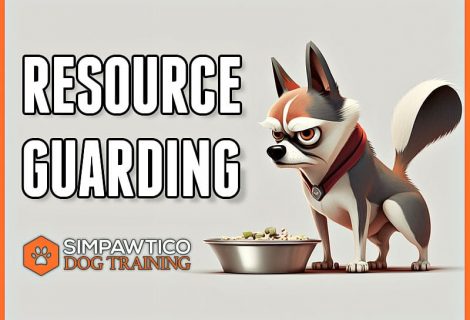


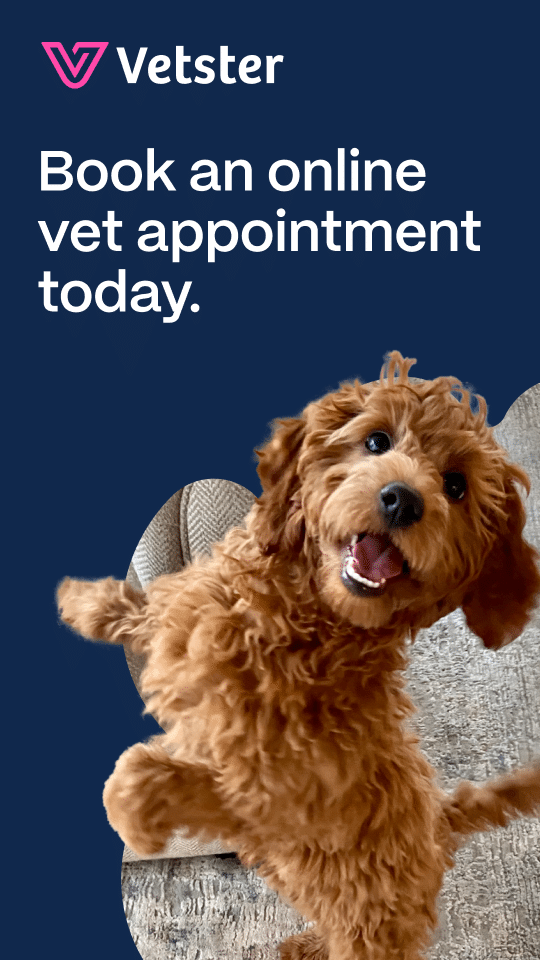

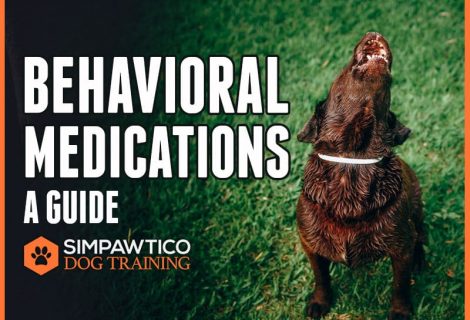
How do you care for the sod? How do you get your new puppy to use the sod when they are in the xpen?
I would use real sod, if possible. Change it when it stinks. Fake grass is usually less effective, but better than nothing. The more real it is, the better it works (assuming grass is the substrate you want the trained to). Getting them to use it is a matter of setting up the den so there’s no other space but bed, and toilet, essentially. Remember that this is just a placeholder to keep potty training from backsliding while you cannot take the puppy out; it doesn’t actually DO any potty training.
Hello should you put 2 puppies in the same play den? Or in separate ones?
Hi Natasha. That’s dicey. You could probably get away with doing it, but I’m afraid they’ll hyper-socialize to each other at the expense of other social situations. I would suggest that they will need to learn to be separate at times and be ok with it. Or, at the very least, make sure you’re providing regular and robust socialization opportunities to other puppies, friendly older dogs, and people of all walks of life. Good luck!